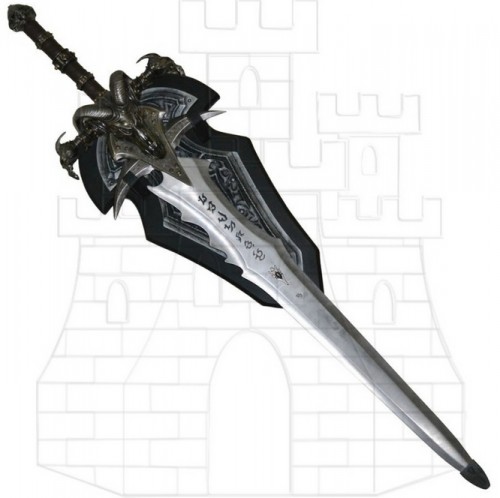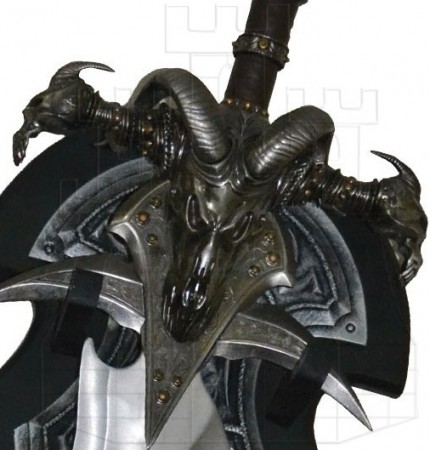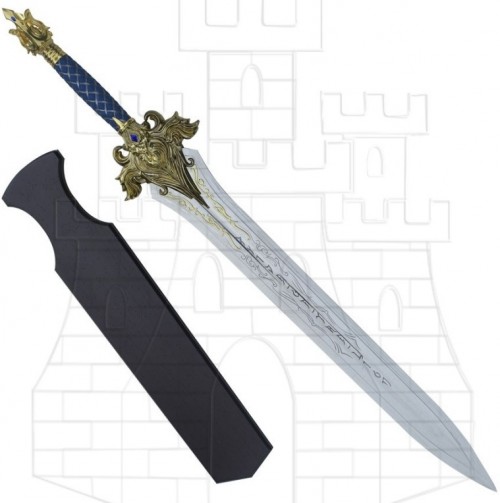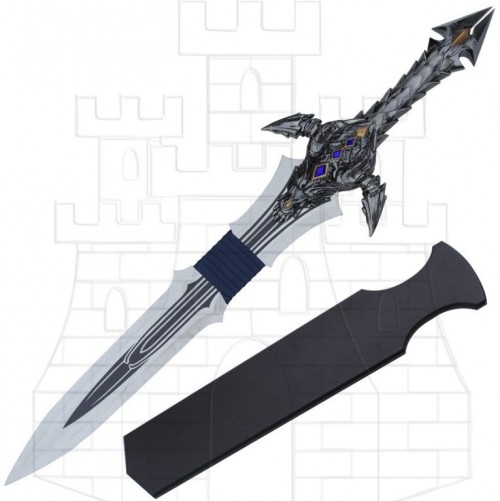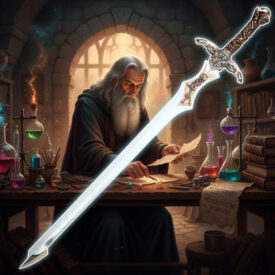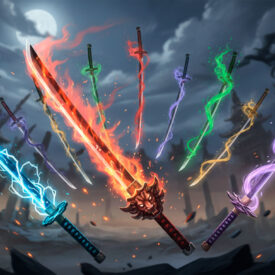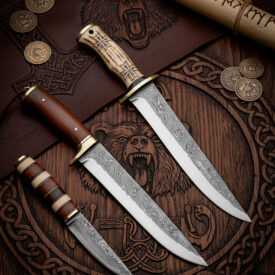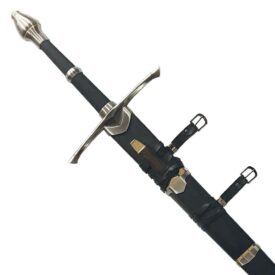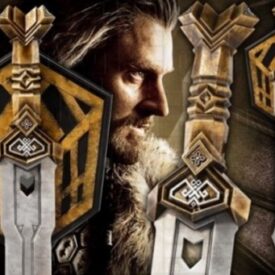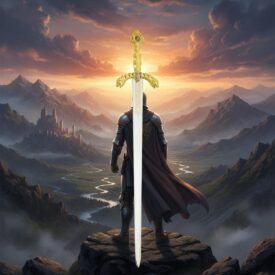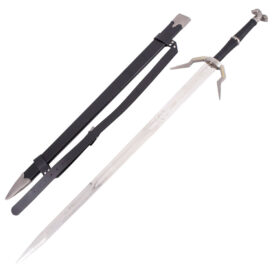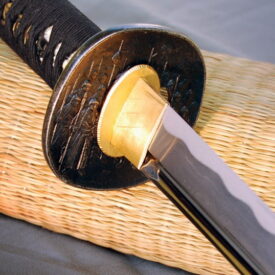Legend Says: The Blade that Whispers to the Hearts of Kings
What turns a sword into a myth? It’s not just the steel, nor the runes that burn in its sheath; it’s the story that carves its edge into a man’s destiny. The Lich King’s sword, known throughout Azeroth as Frostmourne or the Frost Agony, is one of those weapons whose name makes sagas tremble. In this article, we will explore its origin, its curse, the powers it offered its wielder, the fall of Arthas Menethil, and how these stories inspire replicas that today adorn display cases and collector forums.
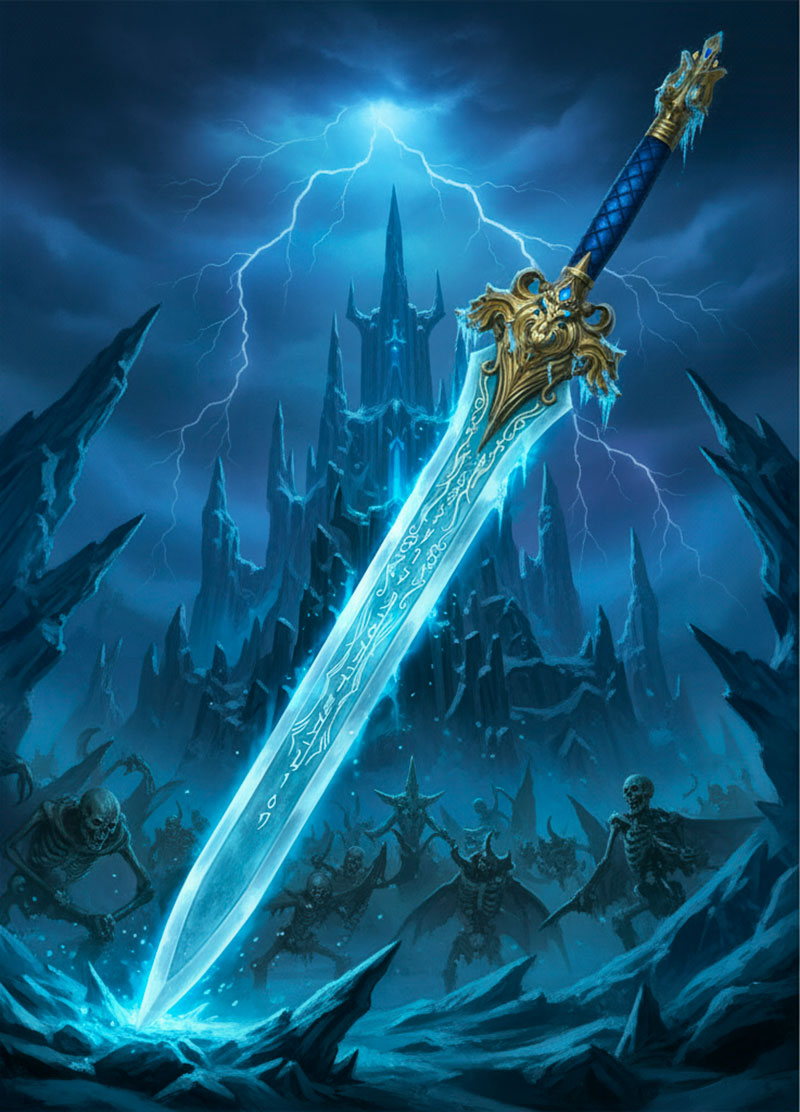
Why the History of Frostmourne Matters
Beyond its mythical value in the lore of World of Warcraft, Frostmourne is a lesson about the thirst for power and its consequences. It is a sword that acts as a narrative catalyst: it transforms a prince into a tyrant and, in doing so, defines entire eras of the fictional world. Knowing its history allows you to understand not only the chronology of events in Azeroth, but also how objects can be characters in themselves.
Frostmourne and the Lich King: Chronology
Below you will find an organized chronology that gathers the essential milestones related to the creation, use, and destruction of Frostmourne. Use it as a quick map before delving into each chapter of this icy tragedy.
| Era | Event |
|---|---|
| Origins and Forging | |
| Creation by order of the Jailer | The Jailer, with the Runecarver forced in Torghast, orders Frostmourne and a runic helm to be forged as “vessels of domination” to spread death in the mortal plane. |
| Draenor, Ner’zhul and the Legion | |
| Destruction of Draenor | Ner’zhul tries to open portals in Draenor; the magical stress causes the world to explode, becoming Outland. |
| Ner’zhul in the Twisting Nether | After the failure, Ner’zhul is suspended in the Twisting Nether. |
| Kil’jaeden’s Intervention | Kil’jaeden finds Ner’zhul and decides to use him in a new plan to conquer Azeroth. |
| Torture and Transformation | The Dreadlords torture Ner’zhul; his mortal form is destroyed and his essence agrees to be immortal in the service of Kil’jaeden, becoming the Lich King. |
| Bound to Armor and Sword | The Naz’rethim bind Ner’zhul’s spirit to ancient armor and Frostmourne; these pieces, forged by the Runecarver, are sealed in a block of ice brought from the Twisting Nether. |
| Launch into Azeroth | The frozen prison with Ner’zhul falls into Northrend, giving rise to Icecrown Citadel. |
| The Fall of Arthas | |
| Search for Frostmourne | Muradin Bronzebeard and Arthas arrive in Northrend; the obsession to save Lordaeron pushes Arthas to claim the sword. |
| Stratholme Massacre | Arthas’ tragic decision that marks his moral breakdown and presages his descent. |
| Encounter in the Cave | The Guardian warns; the ice breaks and Arthas takes Frostmourne, surrendering his soul to the Lich King. |
| Consolidation of Power and Fusion | |
| Illidan vs Arthas | Arthas defeats Illidan and prepares to occupy the Frozen Throne; upon donning the Helm of Domination, his essence merges with Ner’zhul. |
| Frostmourne as a receptacle and destruction | |
| Souls in Frostmourne | The sword accumulates countless souls, including figures like Uther and King Terenas himself. |
| Final Battle | In Icecrown Citadel, Tirion Fordring with the Ashbringer defeats the Lich King and destroys Frostmourne, freeing the souls. |
Discovery and Fall: The Shadow over Arthas
The image is almost cinematic: a young prince, burdened with responsibilities, pursues an invisible threat that devours lives. He followed Mal’Ganis to the icy peaks of Northrend and, there, the promise of a weapon capable of saving his kingdom shone like a beacon. Muradin Bronzebeard found the cave where the sword lay with him. An inscription warned of its price: “Whosoever takes up this blade, shall wield eternal power… too much strength can scar the spirit.” Muradin, wise and skeptical, tried to stop Arthas. But the prince’s determination, born of fear of losing his people, was stronger than doubt.
When the ice yielded, destiny closed around Arthas. A fragment struck Muradin; he was believed dead. Arthas put aside his hammer and, without hesitation, took the Frost Agony. From that moment, the voice whispering from the blade began to undermine his will. The sword not only conferred physical power: it promised him vengeance, certainty, and the means to impose his justice. All in exchange for his soul.
The Progression of Corruption
Frostmourne’s curse acts like a slow, precise disease. It’s not an instantaneous turn to absolute evil; it’s a process of eroding consciousness. At first, the wielder believes they are protecting a greater good. Then, empathy clouds; friendly voices become threats. Finally, the Lich King’s will completely subjugates the individual, until the original identity dissolves.
Powers and Abilities: What Made the Sword Impossible
Frostmourne is no ordinary sword. Its runic design grants it abilities ranging from life drain to soul capture. These powers manifest in various ways:
- Soul Drain and Capture: The blade can absorb the spirit of its victims and store it, creating a reserve of souls that strengthens the Lich King.
- Necrotic Domination: Allows raising the dead, commanding legions of undead, and spreading plagues that corrupt entire regions.
- Communication and Control: The Lich King could speak and see through his wielder, exerting telepathic control from a distance.
- Combat Empowerment: In games and lore, the sword increased damage, critical strike chance, and had unique effects against armor and living beings.
These abilities are not just game mechanics; they are narrative tools that explain why Arthas, after wielding Frostmourne, was able to seize Lordaeron from his own father and turn it into a fortress for the Scourge.
The Curse as a Character
Think of the sword as another actor: its presence changes the scene, strains bonds, and alters motivations. In literature and games, such objects serve to explore profound themes: free will vs. destiny, sacrifice, and corruption. Frostmourne personifies the broken promise: and in that promise lies its tragedy.
The Forge, the Forgers, and Theories About its Origin
For years, Frostmourne’s authorship was debated among chroniclers and players. Two versions have predominated: one that attributes the sword to Ner’zhul or the Dreadlords under Kil’jaeden’s orders, and a more recent one that links its creation to the Jailer himself, using the Runecarver as an enslaved artisan in Torghast.
The Jailer’s hypothesis adds a deeper layer of tragedy: instead of simply being a demonic artifact, Frostmourne would be a tool created by an even older enemy for purposes of domination. Whatever its origin, the sword appeared sealed in a block of ice from the Twisting Nether, guarded in Icecrown Citadel until the day its will found a vessel in Arthas.
Heroic Tales and Defeats: The End of Frost Agony
After years of dominion and terror, Frostmourne met its end in Icecrown Citadel. The final battle was not just physical; it was a clash of wills and symbols. Tirion Fordring, wielding the legendary Ashbringer, managed to break the Lich King’s will and destroy the sword that had chained so many souls. With its fragmentation, the trapped souls were freed, and the cycle of corruption that had begun with Arthas ended cathartically.
Replicas, Materials, and Fidelity: How Legends are Represented
Replicas allow fans to hold history. However, not all replicas are alike: they vary in materials, level of detail, and fidelity to the original design. When evaluating a Frostmourne replica, it is important to consider:
- Blade Material: carbon steel, stainless steel, or alloys (Zamak) for decorative pieces.
- Finishes and Patinas: paints, silver plating, or polishes that recreate the runic and icy appearance.
- Mounting and Support: if it includes a wall mount, display stand, or certificate of authenticity.
- Size and Weight: from 1:1 replicas to reduced or decorative versions (e.g., 120 cm replicas).
| Replica Type | Common Material | Level of Detail | Recommended Use |
|---|---|---|---|
| Decorative Replica | Zamak or alloys | Good for display cases | Decoration, casual cosplay |
| Display Replica (high fidelity) | Carbon steel with painted details | Very high, with runes and textures | Collecting, exhibitions |
| Functional Replica (unsharpened) | Stainless steel | High, with greater real weight | Historical reenactment and events |
Below you will see some of the most striking historical replicas and photographs that have accompanied these pieces over time.
The replica described in ancient texts — a 120 cm piece with a carbon steel blade, Zamak, and a wall mount — attempts to capture the epic scale of the sword in the video game. These replicas play an important role for those who wish to preserve the aesthetic without participating in the narrative conflict they inspire.
Quick Technical Comparison
- Zamak and Alloys: lightweight, more economical, suitable for display.
- Carbon Steel: authentic feel; requires maintenance to prevent corrosion.
- Stainless Steel: balance between durability and appearance.
In practice, the choice depends on what you are looking for: if the priority is aesthetics in a display case, a well-finished Zamak piece may suffice. If you prefer an object that looks and weighs like the original, carbon steel or stainless steel will be the most evocative option.
Cultural Significance and Legacy in the Community
Frostmourne transcends its function as a weapon. For players and storytellers, it is a symbol of tragedy, a warning about unchecked ambition. Its history has inspired theories, fan art, and a vast cultural production: from comics to sculptures and handmade replicas.
The Story Behind an Icon
Arthas’ narrative arc — from prince to total corruption — is one of the best-constructed stories within the Blizzard universe. Frostmourne is the hinge on which that tragedy pivots. In each recreation, in each replica, the same question persists: what would you have done with a weapon that promised salvation in exchange for the freedom of the soul?
Tips for Preserving Replicas and Collectibles
If you own or plan to safeguard a Frostmourne replica, consider these practices to keep it in optimal condition:
- Ensure proper support and avoid prolonged direct sunlight exposure to prevent damage to paints and patinas.
- Clean with soft cloths and recommended products based on the material (avoid harsh chemicals on painted parts).
- Control humidity and temperature if the replica includes carbon steel parts to prevent corrosion.
- Document the piece: photos, certificates, and acquisition date increase its sentimental and collection value.
The Narrative Weight of a Weapon: Lessons for Creators
Writers and designers who create iconic objects can learn several lessons from Frostmourne:
- Make the object affect the characters: A weapon with moral consequences adds conflict and depth.
- Connect the object to the world’s mythology: A dark or ancient origin multiplies its relevance.
- Use symbolism: Frostmourne doesn’t just kill; it traps souls. That symbolism enriches the narrative.
Final Thoughts on Frostmourne and its Shadow
The story of Frostmourne is, in essence, an epic fable: power that promises to save and ends up devouring. It reminds us that the objects we revere contain narratives that, well told, transcend their material. Arthas is living proof that ambition and fear can turn a savior into a tyrant.
If, upon reading this chronicle, you feel the call of the epic, remember that every replica we admire today preserves a part of that tragedy: beauty and danger intertwined, ready to whisper to anyone who comes too close.
VIEW WARCRAFT SWORDS | VIEW MORE ABOUT WARCRAFT | VIEW OTHER MOVIE SWORDS
